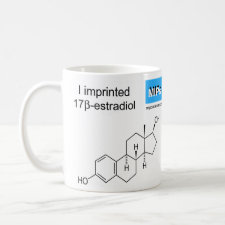
Authors: Schillinger E, Möder M, Olsson GD, Nicholls IA, Sellergren B
Article Title: An Artificial Estrogen Receptor through Combinatorial Imprinting.
Publication date: 2012
Journal: Chemistry - A European Journal
Volume: 18
Issue: (46)
Page numbers: 14773-14783.
DOI: 10.1002/chem.201201428
Abstract: Polymeric sorbents targeting endocrine-disrupting estrogen active compounds (EAC) were prepared by terpolymer imprinting using 17β-estradiol (E2) as template. From a group of eight functional monomers representing Brønsted acids, bases, hydrogen-bond donors and acceptors, as well as π-interacting monomers, a terpolymer library that comprises all possible binary combinations of the functional monomers was prepared. Binding tests revealed that imprinted polymers exhibit a markedly higher affinity for E2 compared to nonimprinted polymers (NIPs) or polymers prepared by using single functional monomers. A combination of methacrylic acid (MAA) and p-vinylbenzoic acid offered a particularly promising lead polymer, displaying an imprinting factor of 17 versus 2.4 for a benchmark polymer prepared by using only MAA as functional monomer. The saturation capacities ascribed to imprinted sites were four to five times higher for this polymer compared to previously reported imprinted polymers. NMR titrations and molecular dynamics simulations corroborated these results, indicating an orthogonal preference of the two functional monomers with respect to the E2 3-OH and 17-OH groups. The optimized polymer exhibited a retentivity for EACs that correlates with their inhibitory effect on the natural receptor. By using the optimized molecularly imprinted polymers (MIPs) in a model water-purification system, they were capable of completely removing ppb levels of a small group of EACs from water. This is in contrast to the performance of nonimprinted polymers and well-established sorbents for water purification (e.g., active carbon), which still contained detectable amounts of the compounds after treatment
Template and target information: 17β-estradiol, E2
Author keywords: endocrine disruptor, Estrogen, imprinting, receptors, Recognition, water treatment



Join the Society for Molecular Imprinting

New items RSS feed
Sign-up for e-mail updates:
Choose between receiving an occasional newsletter or more frequent e-mail alerts.
Click here to go to the sign-up page.
Is your name elemental or peptidic? Enter your name and find out by clicking either of the buttons below!
Other products you may like:
 MIPdatabase
MIPdatabase









